Acrylic Pouring Terms Explained – Beginners Start Here!
Taking away the confusion around fluid art terms
If you are a beginner to acrylic pouring then you may have come across a number of terms that you have never heard before.
Cells, flip cup, dirty pours and pouring medium and goodness knows what else it all sounds crazy. Don’t let the weird terms stop you, when I first started my new hobby I was a little overwhelmed too.
It took a bit of investigation to brush up on the terminology and from there I could finally begin to understand what I was reading.
Here you will find a list of acrylic pouring terms for beginners so that you will be fluent in the lingo – the easy way. That way you can avoid all the extra research and get to pouring right away!
[TS_Poll id=”1″]

Today, you will learn the following:
- Acrylic pouring definitions
- What you can pour on
- What is a dirty pour?
- How to get cells
- What is pouring medium and what are the substitutes?
Acrylic paint pouring definitions listed
Definitions for fluid art related words A – F:
Abstract – In fluid art, the term abstract means it does not represent external reality. It seeks to achieve the effect using shapes, forms, colors, and textures rather than representations of real-life objects and atmospheres.
Acetate – This is a clear sheet of plastic that is often used to wipe the color over another color in order to create cells in the work.
Archival quality – Relating to how “long” an artwork will last. These are the materials that meet the criteria of being permanent, stopping an artwork from fading or losing quality over time. This includes lignin-free, pH neutral, alkaline-buffered, stable in light, and other common materials in paint pouring. To stop your painting from yellowing over time – for example.
Artist quality – These paints are the best quality that you can buy, but they are also the most expensive. They have high pigment concentrations and no fillers, making them professional quality paints. Earth-derived artist quality, is the most expensive. You do not necessarily need this, because fluid art is high quantity of paint we recommend going with the cheaper student grade acrylic.
ASTM – The American Society for Testing and Materials. They have independent standards for certain paints qualities and this must be adopted by manufacturers.

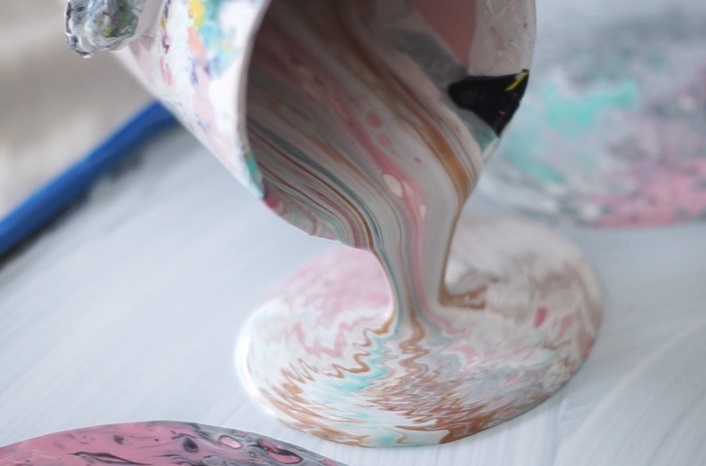

Binder – The gluey substance which binds a dry pigment together. In acrylic paints, “acrylic polymer” is the binder.
Bleeding – describes the action of one color running into another.
Canvas – A cloth used over a stretcher frame or glued onto cardboard to paint on. It can also be used as the term for the complete unit of the canvas fabric and the wooden frame.
Canvas board – A heavy cardboard with a cotton or linen canvas glued to one side, with the edges folded over to the back. Sometimes also called a canvas panel.
Canvas weight – This refers to how thick the canvas is, usually labeled in ounces, 8oz, 10oz, 12oz.
Cells – A goal of many acrylic pour painters, to create movement in their paint layers where the paint on top separates and allows colors underneath to show through, usually in round or organic shapes called cells.
Color wheel – A circle with different colored sectors used to show the relationship between colors.
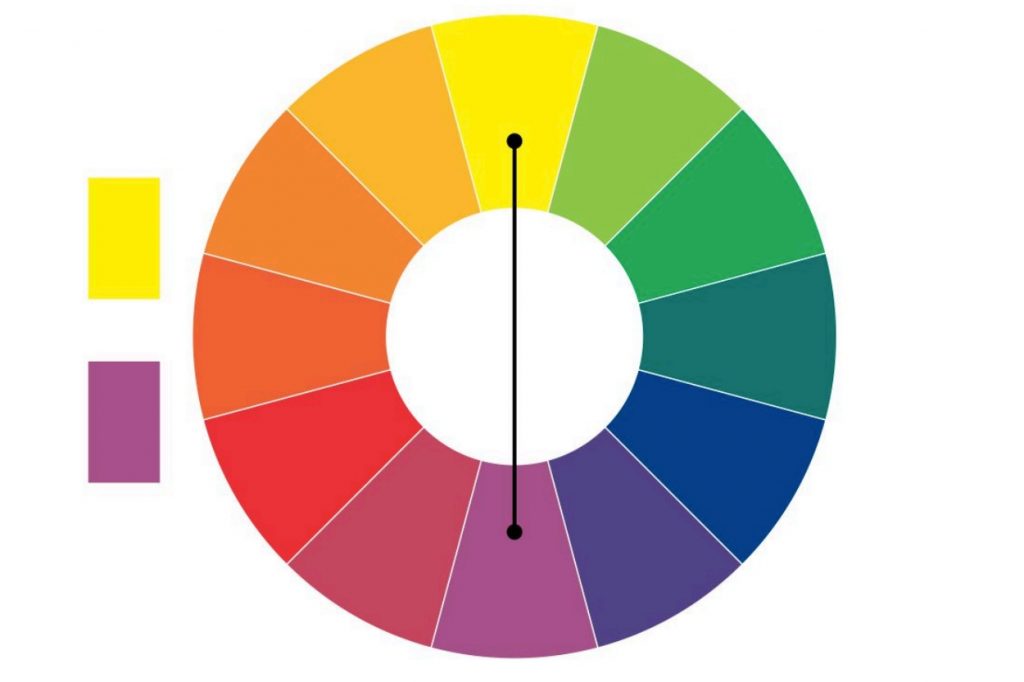
Complementary Colours – The color that is directly across from a color on the color wheel. Complementary colors make each other seem more saturated and bright when placed side by side. They can also be mixed together in various amounts to unsaturate each other. (eg. red and green, purple and yellow, orange and blue).
Consistency – The thickness or thinness of paint, basically how the paint mix ‘feels’ or how it ‘pours’ onto the canvas.
Dimethicone – A skin-safe form of silicone oil, often added to acrylic pour paintings to assist in the creation of cells.
Dip/dipping technique – A form of acrylic pour or flow painting where the surface is dipped into the mixed paint to create interesting designs and cells. This is often used as a way of creating art from paint that spilled over the edges of other paintings, to avoid waste.
Dirty pour – A technique where all colors are added to a cup or container at the same time and then poured together to create an acrylic pouring paint effect. A flip cup (see below) is also a form of dirty pour.

Easel – A wooden or metal stand for holding a canvas, a panel, or a drawing-board.
Flip cup – A form of dirty pour (see above). All colors are added to a cup or container, the canvas or surface is placed painting side down onto the cup and then the two together are turned upside down without the paint escaping. The cup is lifted allowing the paint to escape and flow across the canvas.
Funnel pour – Paint colors are added to a funnel with the end blocked. Once all paints are added, the end of the funnel is released and the paints flow onto the canvas as the funnel is moved to create the design.
Definitions for fluid art related words G – Z:
Gel medium – A semi-solid material that you can mix in with your acrylics to drastically change the texture, consistency, and can make your paint go a lot further.
Gesso – Used to prime the surface of the canvas and seal it so you can paint on it. It is a combination of chalk (Calcium Carbonate) and an acrylic polymer medium latex. Gesso increases the tooth of the surface, giving the paint something to grab onto and stick. Usually white in color, as Titanium White is included in the mixture. (This is why all stretched, primed canvases are usually pure white).
Gloss medium – Medium that you can mix in with your acrylic paints to add shine to the paint or use to varnish the surface.
Intensity – The purity and brightness of a color. Also called saturation.
Interference paint – When viewed from different angles the paint appears differently. Painted over a dark color you can see one color, paint the same color over a light background and you see the complementary color. Add a very small amount of black to Interference colors to produce deeper, richer, opalescent effects.
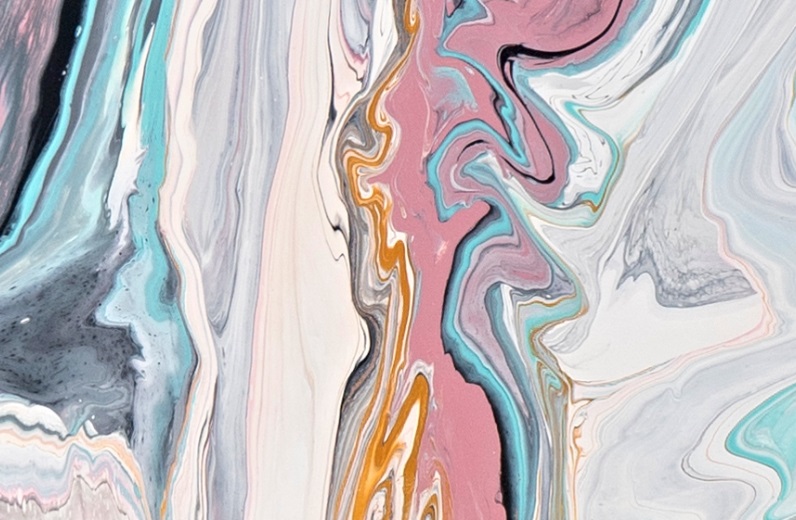
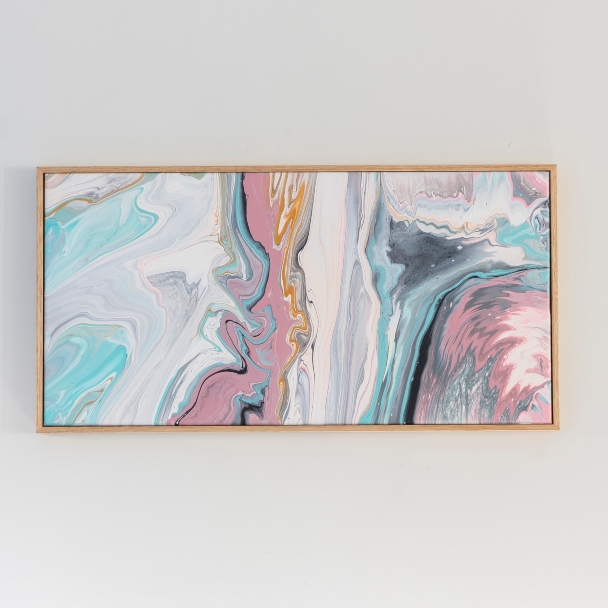
Lightfast – Resistant to fading or other changes due to light.
Matte – Flat, nonglossy; having a dull surface appearance. Variant spelling – matt.
Medium – The method in which an artist works; oil-painting, gouache, pastel, pen and ink, etching, collage, sculpture, etc., are all media for his expression.
Mixed media – One or more medium used in the same picture.
Opaque – A pigment that doesn’t allow light through, as opposed to “Transparent” which is the opposite, and does let light through.
Palette – The surfaces that you mix colors onto, this can vary from wooden palettes to glass, to the tear-off paper palette. Acrylics, due to their fast-drying nature, benefit from a stay-wet palette. It can also be used to describe the range of colors you are working with, i.e. I’m working with a palette of earth tones in my next work.
Permanence – The ability of the paint to retain its original colors through time. Most acrylic paint colors have high permanence except for wild synthetic colors like neons.
Pigment – The raw material that all paints are made from. Natural or synthetic materials are finely ground and mixed with a liquid binder into a paste to make paint.
Pouring medium – An additive to your acrylic paint, designed to (usually) keep the paint wet and workable longer, and promote it to flow and move. It may or may not ‘thin’ the paint depending on the product used. Examples might be the Liquitex Pouring Medium, Floetrol, GAC 800, or PVA Glue.

Puddle pour – A technique where acrylic paints are layered on top of each other in several ‘puddles’ before the canvas is tipped to create interesting designs in the flowing paints.
Resin – A type of clear, glossy protective finish sometimes added to poured paintings to bring back the vibrant color of the paint and give the painting depth. Also described as epoxy, this two-part product produces a chemical reaction when mixed and eventually hardens (or cures) to a clear plastic durable finish.
Silicone oil – An oil product added to the paint to encourage the formation of cells. Often heat will be applied with a chef’s torch to create additional cells once the design has been created.
Stretcher Bar – The wooden frames than raw canvas is stretched around.
Swipe / swiping – The process of dragging acrylic colors across each other to mix them and encourage the formation of cells.
Torching – Where heat is quickly flashed across the surface of painting while the paint is still wet. This is often carried out using a chef’s torch and serves two purposes. It will pop any air bubbles in the paint and also encourage the formation of cells.
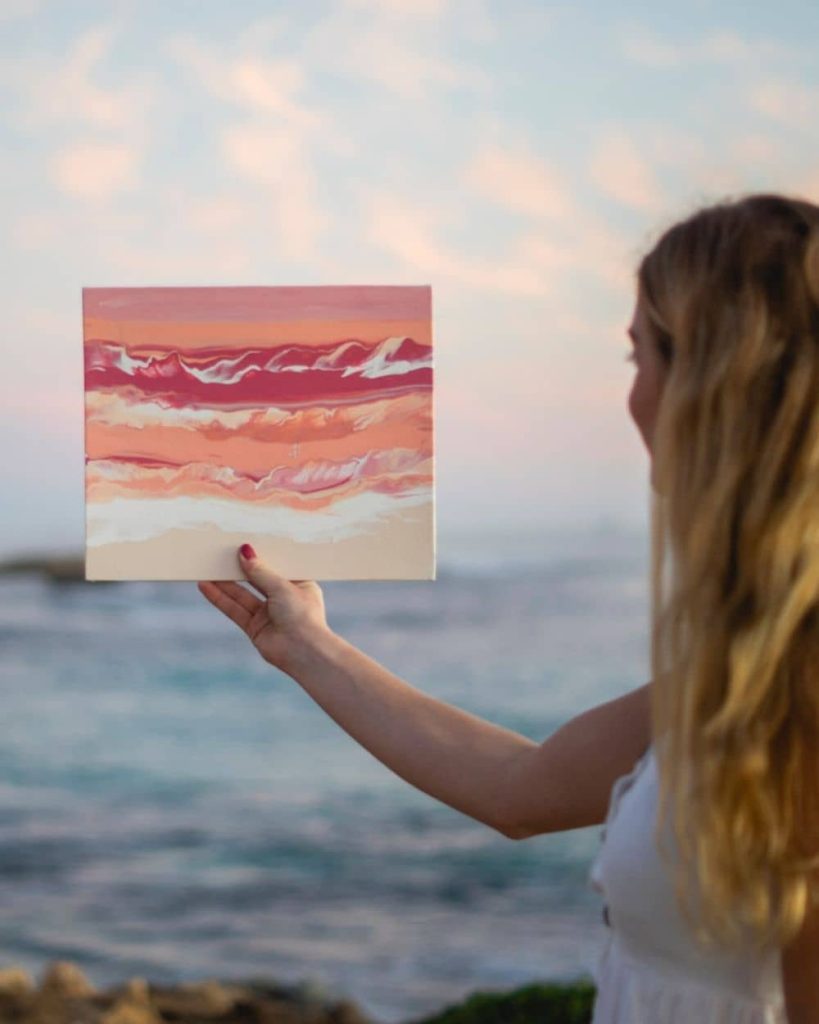
Transparent – The color is slightly see-through, allowing light to penetrate it. When applied over other layers, some of the layers underneath will show through and will be visually mixed by our eyes with the transparent layer on top. (Eg. laying transparent yellow over a blue layer will visually read as green to us). This is the opposite of opaque color.
Varnish – Generally, a more or less transparent film-forming liquid that dries into a solid film.
Yupo paper – An alternative to traditional art papers. It’s a synthetic paper, machine-made in the USA of 100% polypropylene. It is waterproof, stain-resistant, and extremely strong and durable.
Frequently asked questions for beginners at fluid art
What can you acrylic pour onto?
There is always regular canvases but it is exciting and even eco-friendly to look into some more out of the box items you can try acrylic pour painting on.
The good thing about acrylic paint is that is can stick to almost ANY surface with little to no preparation!
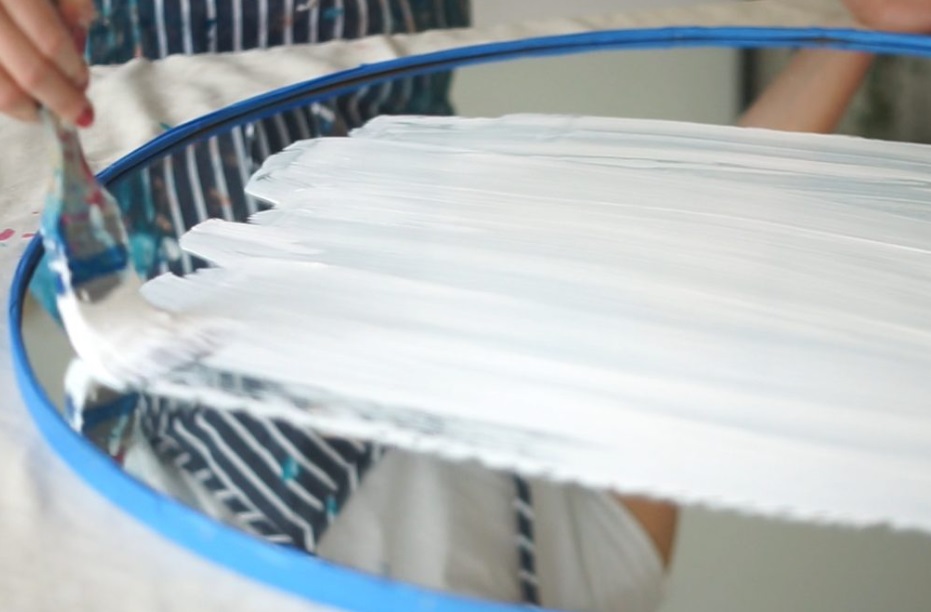
You can pour on virtually anything within reason! Such as:
- Boxes
- Pots for pot plants
- Some ceramics
- Decorative ornaments
- Mirrors
- Tables
- Wood
- Coasters
- Sheet Metal
- Thick MDF
I saw someone pour a new cover for their phone case and another lady poured onto her hair brush!
You just have to seal it when dry with a spray sealer from your hardware store. Paint will stick better on some items with a quick coat of surface prep paint known as primer. Chat to a worker at a hardware store for more information.
To see how the paint pouring will turn out on a new surface you may want to paint a small area and see what it looks like once it is dry, or look up online whether it needs priming.
This is a great thing to explore with and have fun. You can up cycle all new artworks for your home.
What is an acrylic dirty pour?
A dirty pour is a term that means when you mix more than one color in the same container before applying it to the canvas or substrate.

You can create double dirty pours by using different colors in separate cups, such as some bright blends of teals and dark greys in one cup and then dark blues and whites in another to contrast.
How do you get cells with acrylic pouring?
There are many different ways to achieve cells. This includes naturally from the acrylic paint and pouring medium, or when you add silicone oil to your paint mix.

You are guaranteed to get acrylic pouring cells on your painting using acrylic pouring techniques and a good mix of paint with pouring medium and/or silicone oil added too.
The best silicone oils on the market to achieve acrylic cells
There are many different silicone products on the market to choose from, but which give you the biggest cells and which gives you the most cells in your work?

Not all silicone oils are the same. There are significant differences in something called viscosity which means the thickness of the fluid.
A low viscosity has the effect of producing large cells with some additional cells within them. It gives a faster ink flow and stronger color gradients.
You can be very precise with a low viscosity silicone oil and you can use a pipette to be even more meticulous.
High viscosity silicone oil produces smaller, sharper defined cells. It has a slightly slower ink flow and noticeably fewer color gradients.
The following silicone oils have created great results, and each has its own purpose when being used for acrylic paint pouring.
Treadmill belt oil is the most used silicone oil in pouring. It gives plenty of nice, small to medium sized cells in your pour paintings.
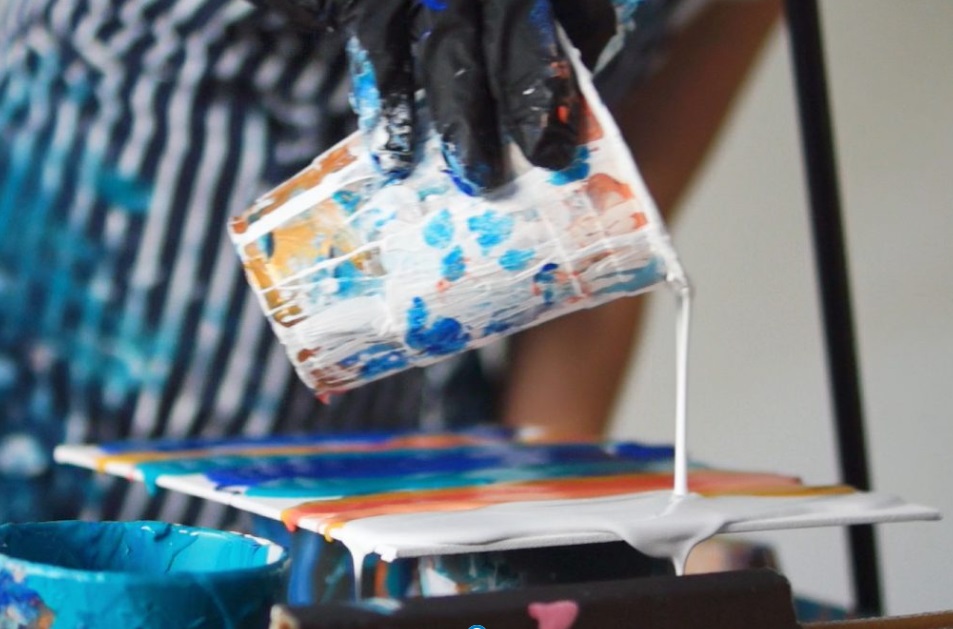

Hair oil with dimethicone is another that is used by many different artists around the world. It gives very good results.
If you decide to choose a hair oil then you need to ensure that Dimethicone is one of the top ingredients listed. It should have a large amount of Dimethicone, a silicone-based additive that is common in many cosmetic products as it does not harm the skin.
One of the best hair oils to use was Organix Hair Oil Dimethicone, which can be found very easily for American pourers.
There are many other hair oils which give similar results, but this is by far the most common among pourers.
For Australian pourers Monte Marte provides a great art purpose silicone oil for around $7 from red dot or check it up online.

What can you substitute for pouring medium?
One of the cheapest and most widely used pouring medium substitutes is PVA glue. You can find this at any craft store, hardware store and even some department stores.
It is a cheap purchase for buying in bulk.
Compared to other pouring mediums, PVA glue is not entirely the best, but it is a good place to start for beginners.
It does not achieve as many cells naturally as floetrol would but some people do not want the cells and PVA glue creates another beautiful effect. They all have their different styles.
Many YouTubers use PVA glue as their pouring medium and acquire amazing results. If you want to try a less expensive alternative to get started then PVA glue may just be the perfect option for you!
The mix ratio is different for PVA glue, you need to loosen the mix with more water.
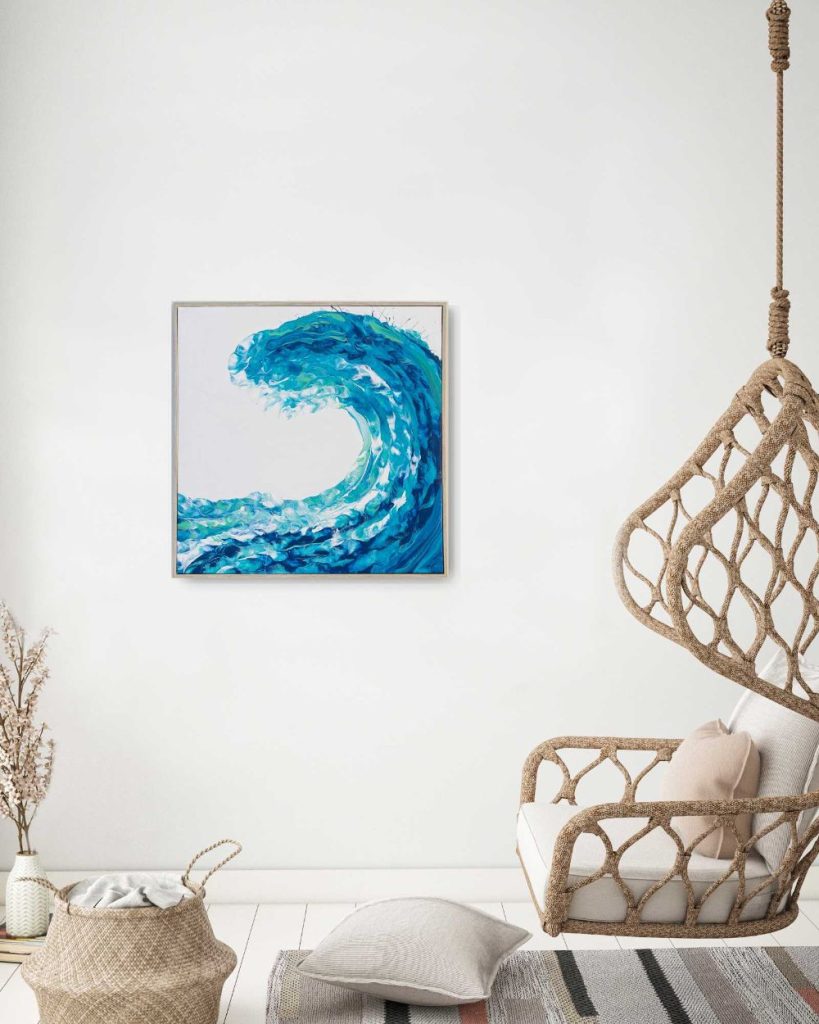

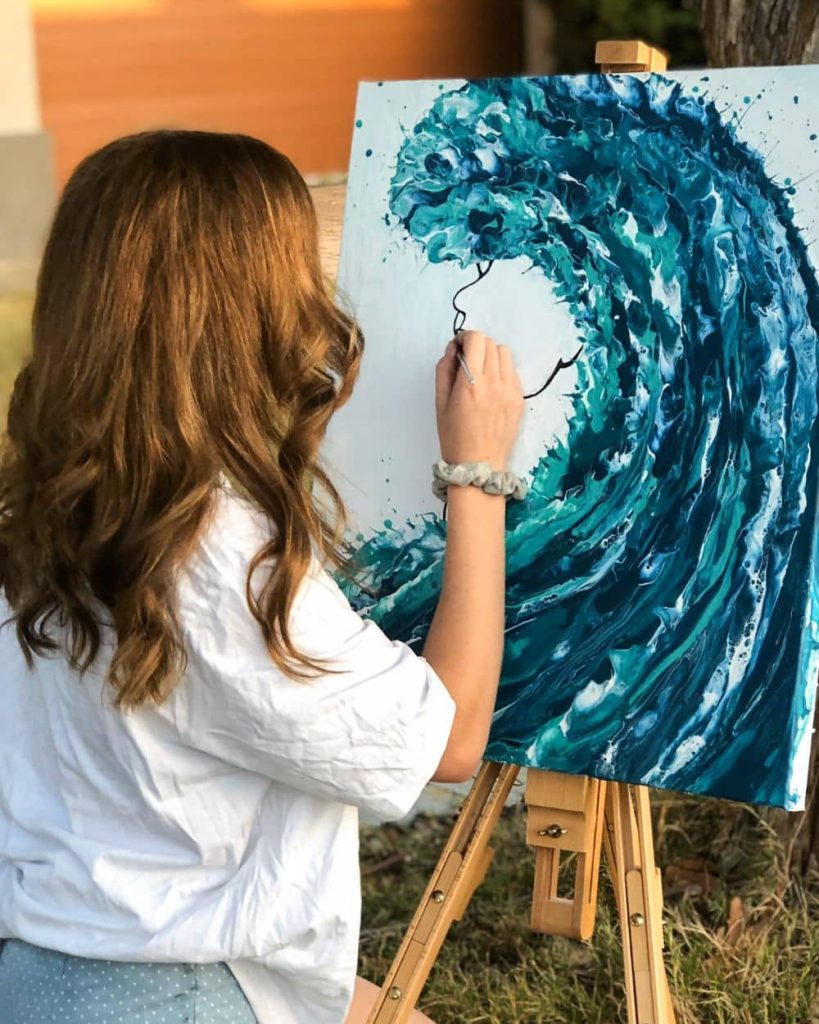

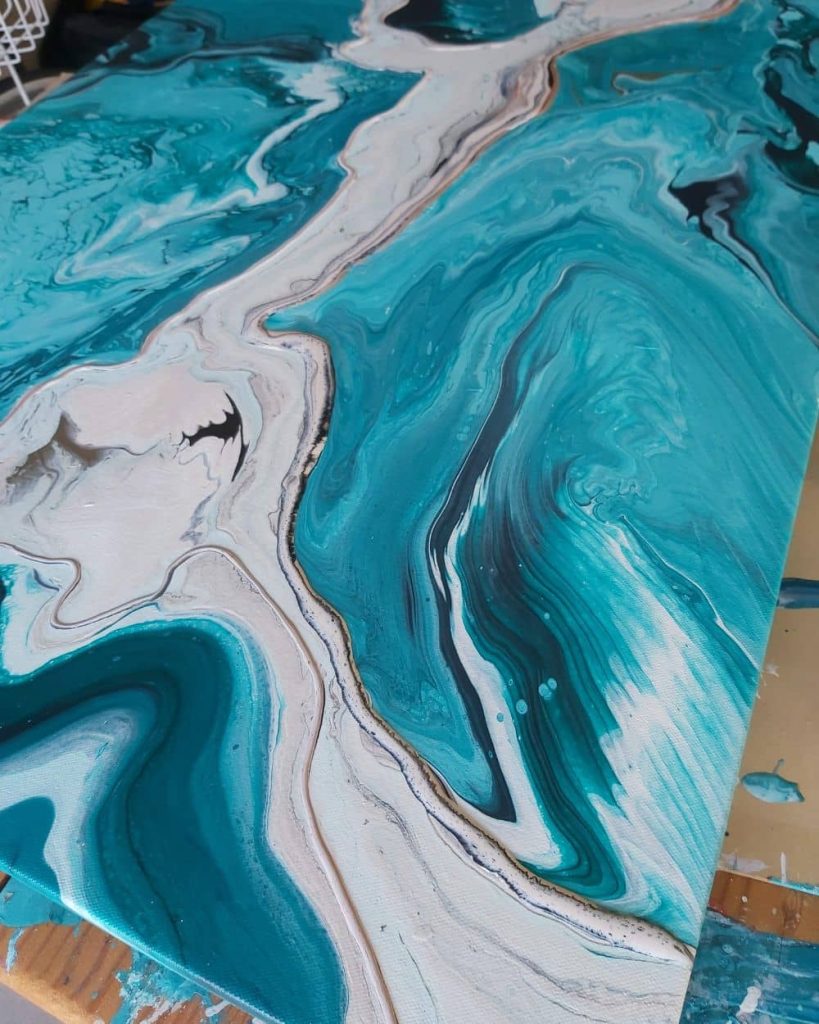

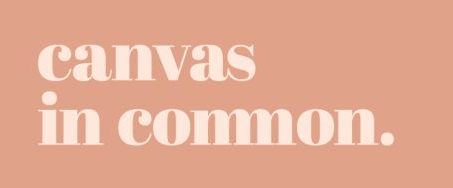
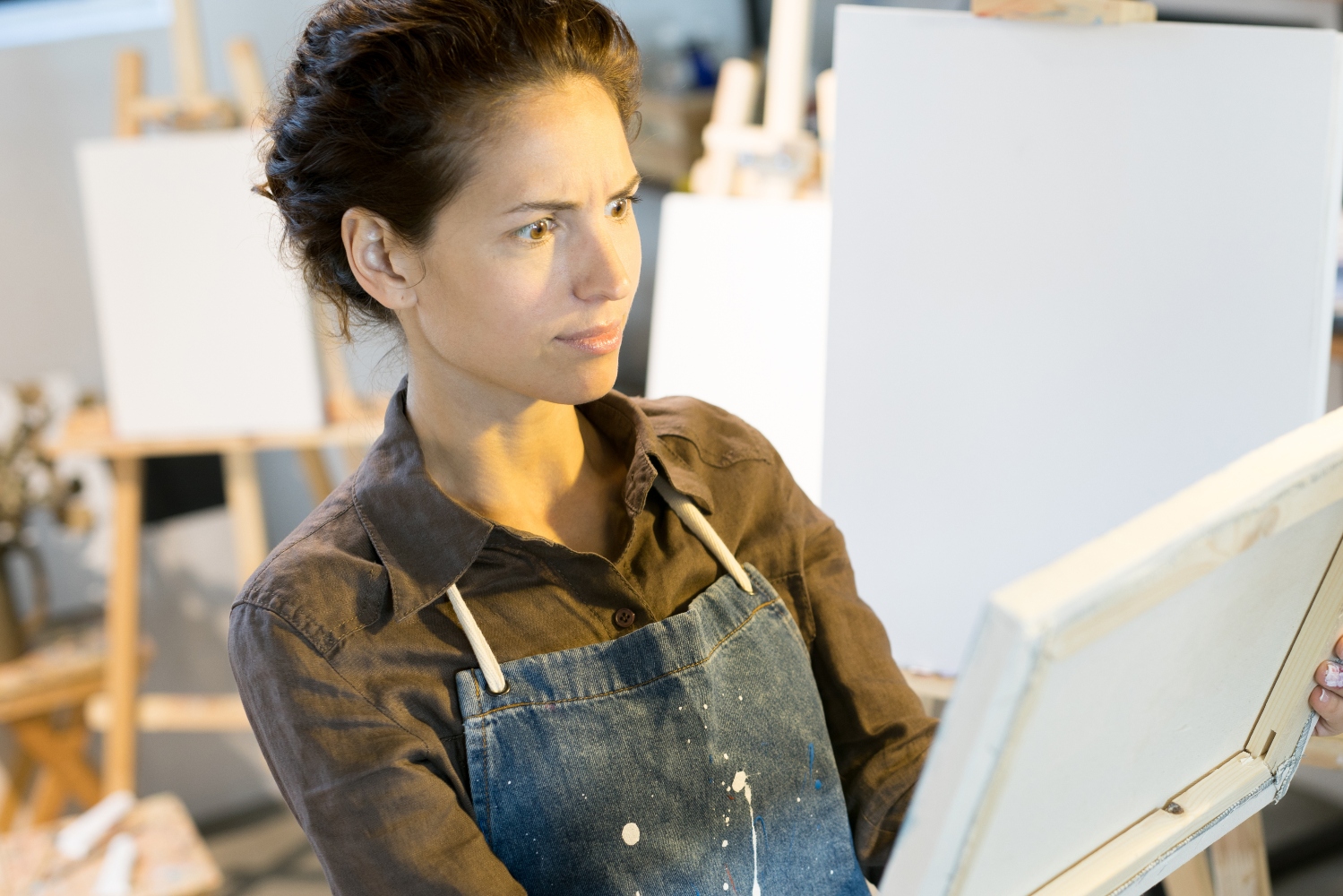



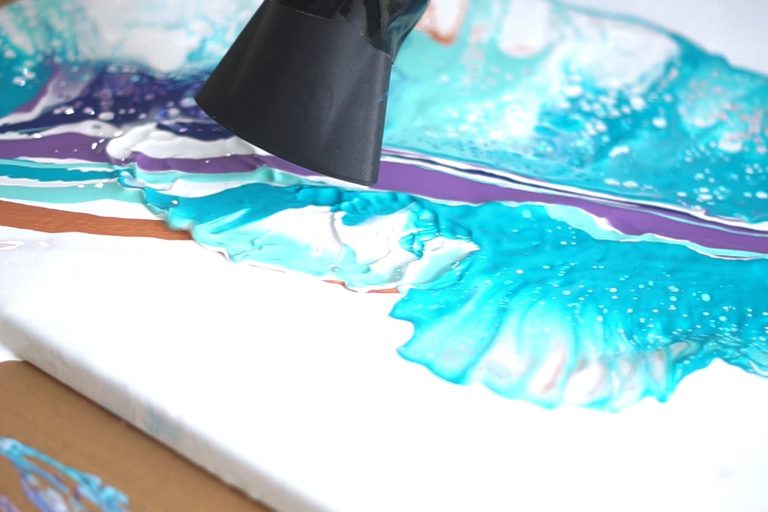

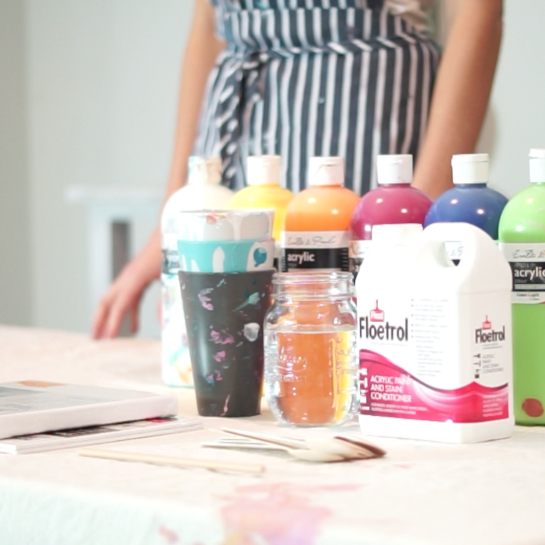
This lesson is very informative and as I am already a canvas acrylic painter (see my IG @artistbd) I love exploring new ideas. This is exciting to me as I love the glossy look with modern creations. Thank you so much for all this info and let’s hope we have a great relationship of creativity.
Very informative Bec,thank you very much for the big help
Well I have just done my first pour… need another go! Not bad but certainly not what I call art, hahaha!
Can I ask about acrylic paint?
1. Can I use Atelier Interactive Artist Acrylic?
2. If so, what ratio of Floetrol to paint?
3. Or even other acrylic paint tubes I.e. Derivan Matisse professional artist acrylics?
4. Do I have to use Mont Marte Pouring Acrylic Paint?
As I am an artist who works with the above, I thought perhaps I can use up my tubes of paint.
I do need to give this a few more times to get my true experience. But as I’m stubborn and persistent, I will carry on!
Thank you for your attention.
I shall continue
Thanks for the information. Iam so excited how my painting turned out.
As a learner, this gave me so much information that I can refer back to when needed. It gave me confidence to have a go. Thank you so much. PS made a hell of a mess, but had so much fun.
Awesome to hear Sue. Exactly what I hoped for this blog. Lol mess is necessary for this art form – I am glad you are diving in there! Keep me updated and keep taking messy action! 🙂
Thank you for this very informative lesson! I think it is very important to know and understand these terms and yet I haven’t seen anyone really explain them so kudos to you.
Hello, what are the acronyms CA and PM in acrylic paint pouring? I see these terms all over Facebook.
Thanks so much answers to many questions. I’ve been pouring for a few weeks and having a blast. Had my 8 and 10 year old great granddaughters over yesterday. Set it up in the back yard to teach them. 20 canvas panels later I was beat but they had so much fun. Definitely a day to use dollar store paint.